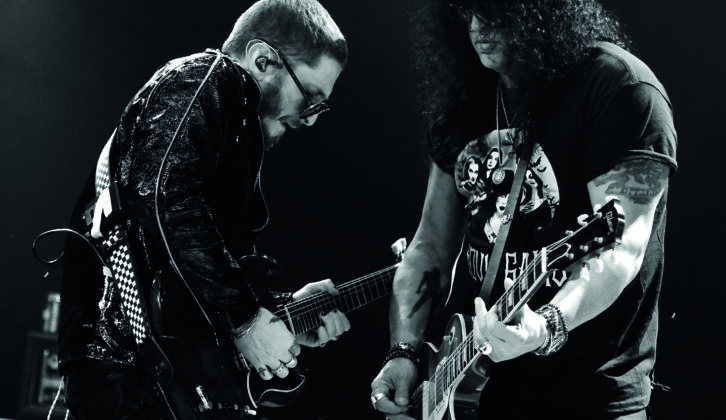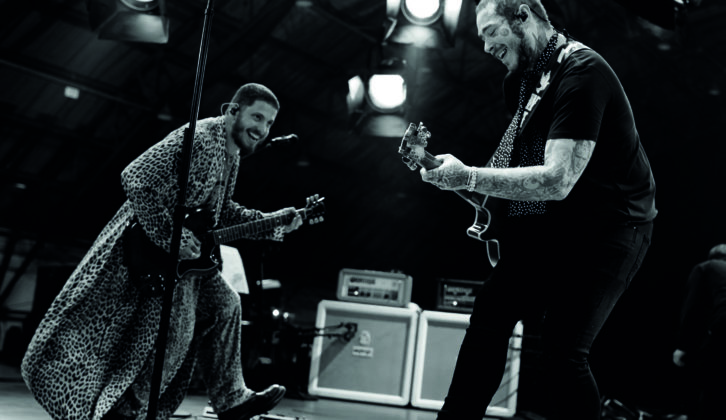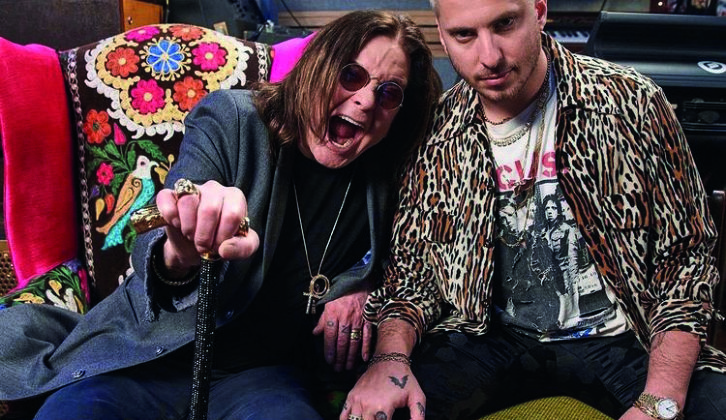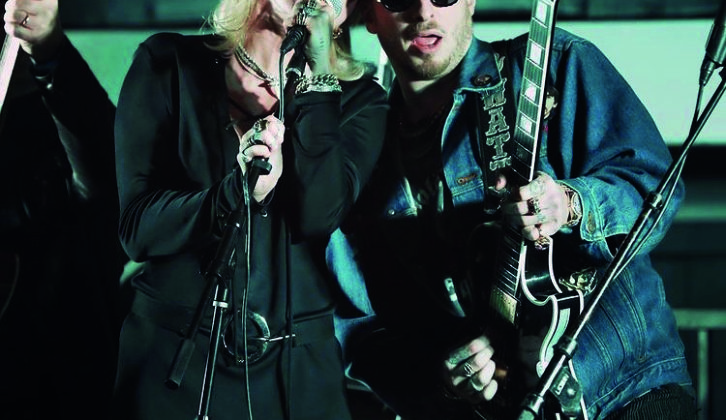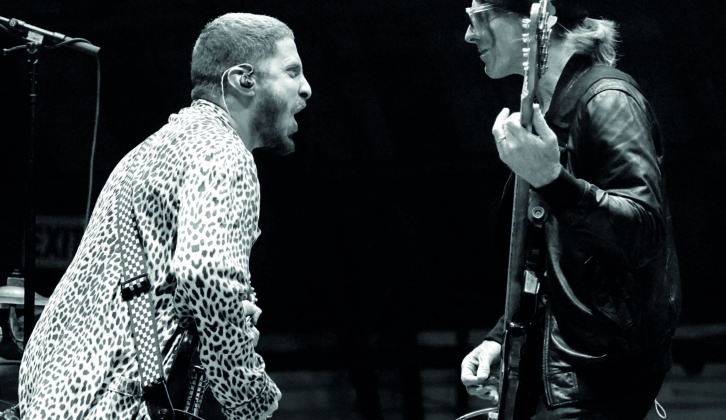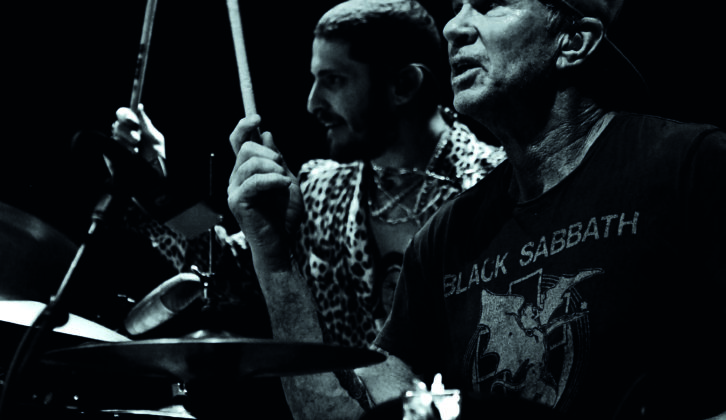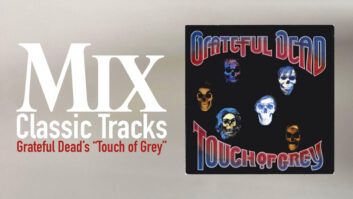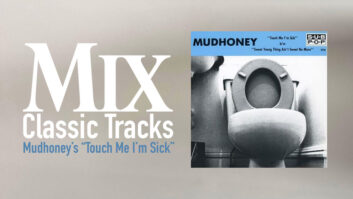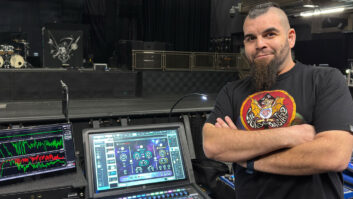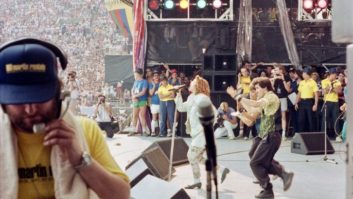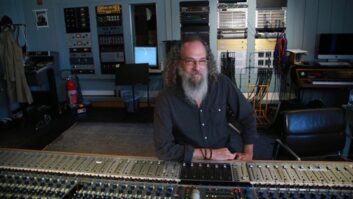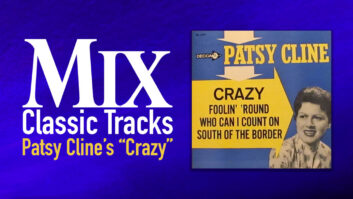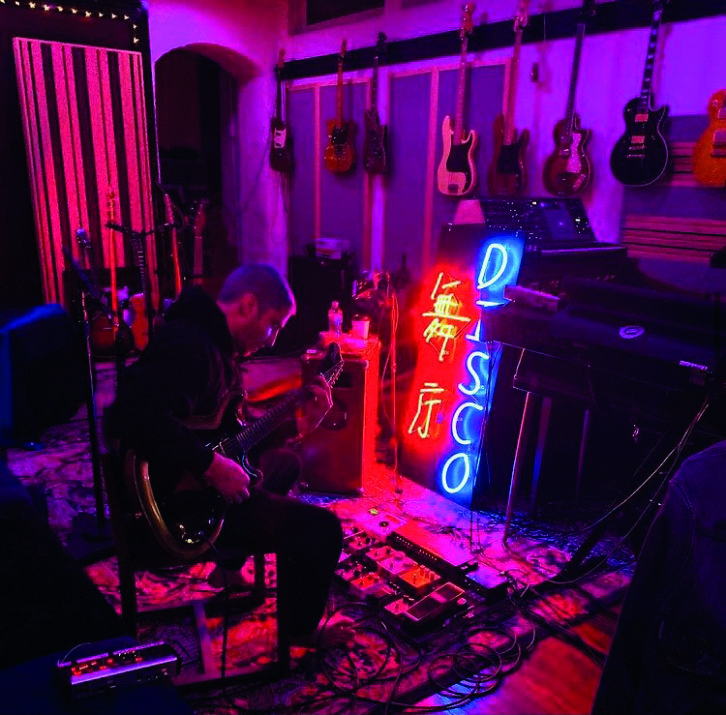
Going into Andrew Watt’s studio in the basement of his Beverly Hills home is like falling down the rabbit hole into Alice’s Wonderland. Except there’s a stairway, and instead of the Mad Hatter and the March Hare or the Cheshire Cat and the White Rabbit, you’ll find Ozzy Osbourne, Miley Cyrus, Dua Lipa and Post Malone.
It is Watt’s work with these artists, among others, that has him in the running for Producer of the Year at the 63rd Grammy Awards. Not only that, but two of the albums he worked on—Lipa’s Future Nostalgia and Malone’s Hollywood’s Bleeding—are competing for Album of the Year. Future Nostalgia is also up for Best Pop Vocal Album.oing into Andrew Watt’s studio in the basement of his Beverly Hills home is like falling down the rabbit hole into Alice’s Wonderland. Except there’s a stairway, and instead of the Mad Hatter and the March Hare or the Cheshire Cat and the White Rabbit, you’ll find Ozzy Osbourne, Miley Cyrus, Dua Lipa and Post Malone.
“When I work with Dua or Post, I’m in for a couple of songs and I make them the best that I can and hand them off,” says the 30-year-old Watt, crouched in a corner of his home studio in a black Norman’s Dark Guitars hooded sweatshirt, always the rocker. “I did eight out of the 12 songs on Miley’s album. She picked all the songs. She bounced things off of me a lot and showed me video concepts, and we talked about aesthetic. I helped with the mix process of the whole album.
“For the Ozzy album, I wrote and produced every single song,” he continues. “I facilitated various things, from flying to Atlanta to record Elton John and getting Slash and Duff from Guns n’ Roses, Chad from the Chili Peppers and Tom Morello from Rage Against the Machine, and flying to Abbey Road to record the strings. I was making taste decisions with Ozzy to create an overall vibe. I helped him sequence things and talked to him about creative and how it should look and how it should sound. It takes an army to make any record.”
While Watt’s producer CV is only about five years long, it has more credits on it than most producers’ entire careers. And his music experience is extensive. His first instrument is the bass guitar, starting with lessons at the age of 11. Then the guitar, which he continued on his own.
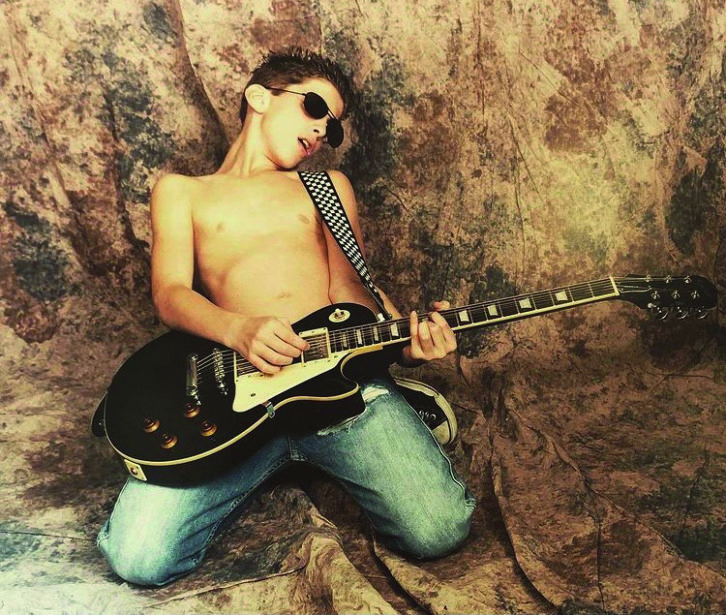
He formed his supergroup, California Breed, with vocalist/bassist Glenn Hughes (Deep Purple/Black Sabbath) and drummer Jason Bonham in 2013, presenting a grinding rock sound on their self-titled album that was better suited to 30 years prior. Following this, Watt became Cody Simpson’s touring guitarist. Opening for Justin Bieber is when his professional relationship with the pop star began, resulting in one of Bieber’s hits, “Let Me Love You.”
Guitar, Drums, Keys
“It always starts with the guitar and some live element from me,” says Watt, who in the past year has used mostly a Martin 0-17 and a Rickenbacker 360 12-string. “The guitar is my comfort zone. Even if the guitar doesn’t make it into the final recording, working out what I want to do musically on that instrument is how my best stuff comes out.”
He works with a cross-section of amps, among them a vintage 8-inch Supro, Fender Princeton and four Orange Heads—including OR50 and Dual Dark plus Marshall Jubilee and Roland JC20. These go into an amp guitar switcher, which is set up at all times.
“The Supro is a magical amp, the go-to amp; it’s very clean, but it brings so much depth to the guitar playing,” says Paul LaMalfa, who has been working as Watt’s in-house engineer and right hand for the last five years. “Most of the records will have a combination of live amps and DI simulated amps. We find that they work well together if you need a super-clean, high-end sound. It’s a good palette of guitar tones. Ozzy is more of the Oranges and amps. With Miley, it’s a lot of amp tones, as well. With Dua, you have more DI guitars, some with the Fender as well.”
Also DI through an 1176 is the Hofner Club Bass. Returning to Watt’s early roots with the instrument, LaMalfa says many songs start with bass riffs: “The Hofner has so much low end, and with the right EQ killing the top end, it can sound modern. Balance it strictly with EQ and it will make it sound more or less live. You get the articulation if you want it. If not, you can turn that off and you’re sitting in more of a hip hop world using a live bass. By cutting the high, you have a live 808.”
There are a lot of signature sounds in Watt’s work, not the least of which are his drums. These are, more often than not, from a four-piece live kit, a Slingerland Radio King that Chad Smith of the Red Hot Chili Peppers left at Watt’s underground studio. The kit sits in an isolation room, always miked, in a fortuitous position.
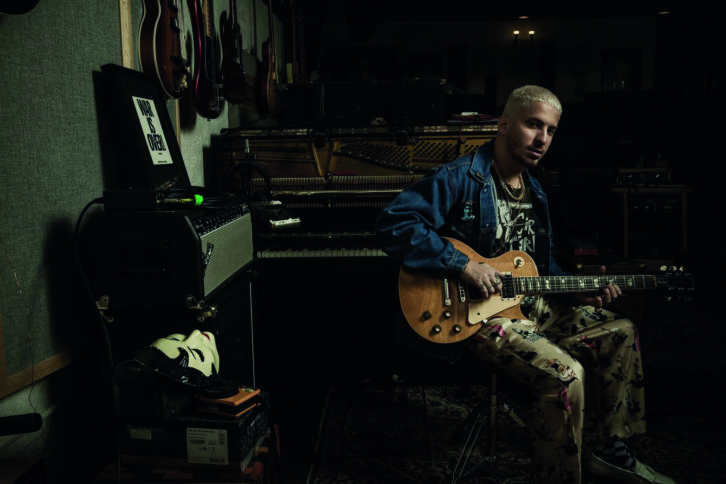
“There is this giant cement stairwell leading out of basement into the backyard, it goes on forever,” says Watt. “We set up two mics out of phase at the top of the staircase, and that’s the secret to our drum sound. The drums’ sound goes up this spiral staircase and hits these mics in a way that makes the drums sound larger than life, and they’re on all my records. We gate that big stairway drum sound and it sounds exactly like Phil Collins.”
“The kick is open so there’s no head on the front,” adds LaMalfa regarding the Slingerland. “There’s an AKG D12E placed off-center and slightly inside the outer rim of the one-headed kick drum. A Shure SM57 on the snare and an Electro-Voice RE16 on the hi-hat and an AEA R84 was used as a mono overhead, positioned almost right between the snare center and kick beater, pretty low. The smaller RCA 77 and two AKG C414s, one on each tom. No overhead. You’ll hear that Slingerland kit on Miley’s song ‘Prisoner’ and Dua’s song ‘Break My Heart.’ We’re incorporating live drums on everything. As many live instruments as we can get away with to bring some liveliness to the recording.”
While the drums on Watt’s productions are noticeable, his Steinway, which also makes frequent appearances, may not be. It’s miked with two Neumann TLM 170s through EMI TG 12412 EQs into the UAD console with LaMalfa switching between 1176 and a Fairchild 670, depending on the song’s needs.
In addition, Watt has a host of other keyboards: Juno 60, Prophet 5, Wurlitzer, Mellotron, Moog Sub Phatty, Oberheim Effects7 and an ARP 2600 belonging to Osbourne, which was used on early Black Sabbath records. The ARP has an unmatched low end, a growly synthesizer sound that gets used on his pop records. All are going through the mixer, except for the Wurlitzer, which is separated going into a Neve.
Variety of Vocals, One Chain
Whether it’s Lipa or Osbourne, Cyrus or Malone on vocals, the exact same microphone and vocal chain is used: Sony C-800G to a Neve 1073 and UAD CL-1B, to Renaissance Channel, RVox for level, iZotope Nectar EQ, Fab-Filter ProDS (or Massey De-Esser) and usually a Magic Death Eye last—then a variety of effects including Valhalla Vintage Verb, a Plate of choice, various delays and often some sort of tight modulation (i.e. Waves Doubler, SoundToys Microshift, or TAL-CHORUS).
“The Sony gives us the consistency to always know what we’re working with,” LaMalfa says. “Any sculpting that needs to be done after becomes so much easier. Some singers don’t care, others prefer their own mic. Shawn Mendes was that way. He wanted a vintage AKG C12, but we knew what we were missing. We asked him to do the verse through our chain, and it was night and day for him so it became no problem. When the vocalist gets that reassurance that they sound as good as they possibly can, then it’s never an argument or a debate.
“The interesting thing with the vocal chain is it was a Neve 1073 and a Retro 176,” he continues. “I would switch out to an 1176 sometimes, and a Tube-Tech CL 1B. We were working with Lewis Bell a lot, and he would have issues with the noise tube compressors would introduce into the signal. We started experimenting with the UAD console and using the onslaught of compression available there. I was so used to the hardware, it was a bit of a learning curve. Once I did learn, I was in both worlds. It’s super-clean and the character is there. A lot of times I’m using a CL 1B and an LA-2A.”
Watt has a specific approach in capturing the vocal and has designed his studio around it as a large live room with a control desk. “I find that when a singer goes into a booth, the glass can be limiting,” he explains. “I’ve been on the other side cutting a vocal. You see the producer and the engineer and someone in the room talking to each other, and it’s vulnerable. The greatest singer in the world could feel like they suck because they’re hearing themselves on the mic and it’s so hi-fi. If you see someone talking and laughing, you immediately think, ‘They’re laughing at me, they’re talking about me,’ and it could trigger them to go somewhere in their head and they don’t say anything about it.
“I like to make everyone a part of the same conversation,” he adds. “I find that if we’re writing and someone is in the seat where they wrote it and I put the mic in front of them and they put on the headphones, they can sing the emotion that they wrote the lyric with.”
Switching to Producer
Even though producing every artist is approached in a similar way with signature sounds, there is still an obvious distinction between the output. Watt attributes this to the artist. “Ozzy is a legend, and you’ve heard his voice on recordings for 50 years; same song same production, Miley’s voice is newer and more current,” he says. “The production squeezes gasoline on the record, but it always comes down to the artist and what they bring.
“When I was becoming more of a producer and I got to show Rick Rubin a bunch of songs from artists that were coming up,” he continues. “He asked, ‘Is this the same artist?’ I said no, and he said, ‘But you’re giving them the same sound.’ I said, ‘Yeah, I’m in this zone right now with this type of music.’ He said, ‘That’s all good, bands sound like other bands, but you’ve got to take the time, sit with these artists and figure out what makes them special that’s going to separate them, that’s going to make their fanbase feel like they’ve got something original about them. It’s okay to use similarities. You’re one musician. You’re going to have similar tricks and they’re going to come out when you’re making music, but make sure there’s something that makes each record its own thing for the artist that’s involved.’ I really took that to heart.”
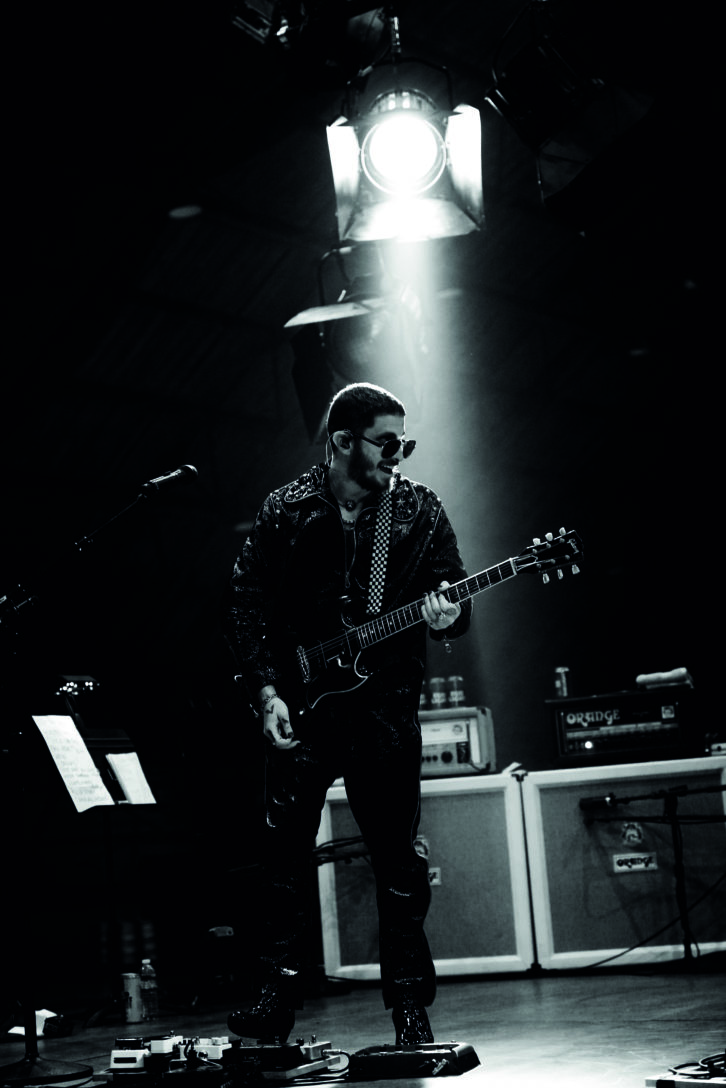
Watt’s experiences are coming together for his own artist album as WATT, where he puts collaboration at the forefront. “The Ozzy/Post collaboration, ‘Take What You Want,’ was a huge moment for me,” he says. “It combined a lot of elements together and felt fresh and new while keeping credibility in the live instrumentation of a really awesome rock song. There was a tapping guitar solo on it and the song was on Top 40 radio. That’s not supposed to happen. That made me feel alive again.
“And making this Ozzy album, where I play guitar in the band, made me really feel alive again. I was told for so long that no one is going to care about rock music. When I was signed as an artist, I had a lot of trouble getting my stuff through. Anytime I make a record that has guitars and drums and live instruments, I feel like I’ve won something. It means more to me than I could ever explain.” N
